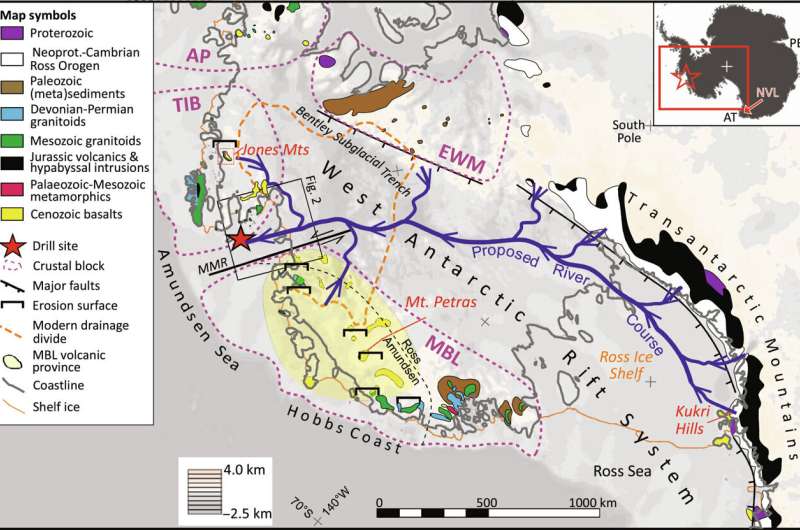June 6, 2024 report
This article has been reviewed according to Science X's editorial process and policies. Editors have highlighted the following attributes while ensuring the content's credibility:
fact-checked
peer-reviewed publication
trusted source
proofread
Core sediment samples show West Antarctica was likely river delta or estuary during Eocene

By testing core samples, an international team of geoscientists and geologists has found evidence that much of what is now West Antarctica was a river delta or estuary 34 to 44 million years ago. Their findings are published in the journal Science Advances.
West Antarctica, also known as Lesser Antarctica, is one of the two major regions that make up Antarctica—it is located in the Western Hemisphere and is separated from East Antarctica by the Transantarctic Mountains. It is also covered by a massive ice sheet. The research team notes that little is known about the history of West Antarctica because it is covered in ice.
In 2017, another team of researchers sought to learn more about the ancient history of West Antarctica by venturing to the Amundsen Sea Embayment, near the area where the ice sheet covering the region flows into the sea. They drilled and collected multiple core samples from several middle and inner shelves. For this new study, the research team conducted an extensive analysis of several of those core samples.
They found sections of sandstone dating back to the middle to late Eocene, approximately 34 to 44 million years ago. They also found that the sandstone revealed evidence of a milder past. Using isotopic analysis and other techniques, the researchers found evidence of an ancient river delta or perhaps an estuary.
The core samples showed that sediment was carried from the mountains to the sea by a large river, perhaps one as large as the modern Rio Grande in the U.S., a finding that showed the region was entirely above sea level.
The research team also found evidence of organic compounds, showing that the region had once hosted freshwater bacteria, and perhaps a wide variety of plants and animals—and it may have had temperatures as high as 19°C during the summer months.
More information: Maximilian Zundel et al, A large-scale transcontinental river system crossed West Antarctica during the Eocene, Science Advances (2024). DOI: 10.1126/sciadv.adn6056
Journal information: Science Advances
© 2024 Science X Network




















